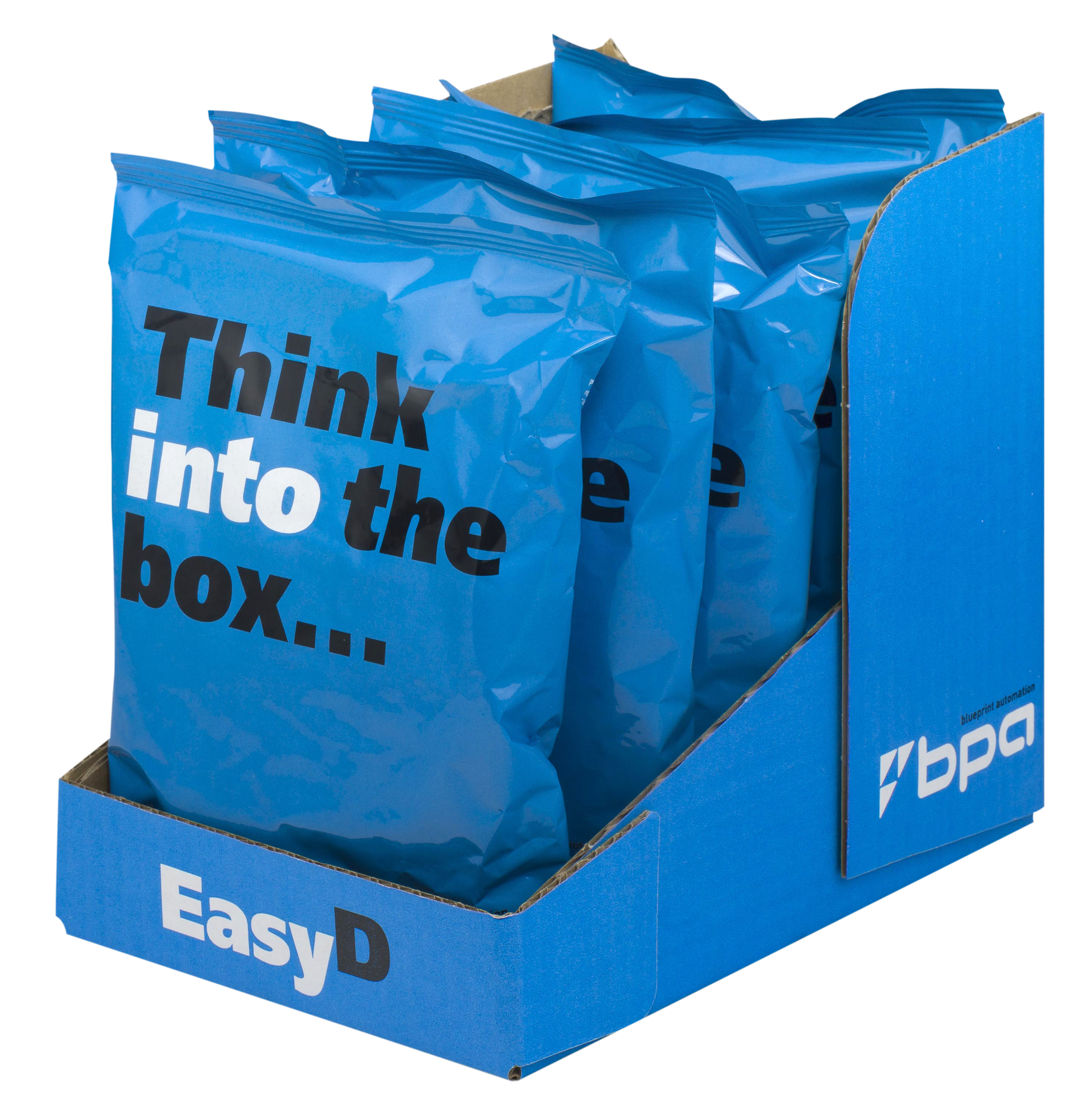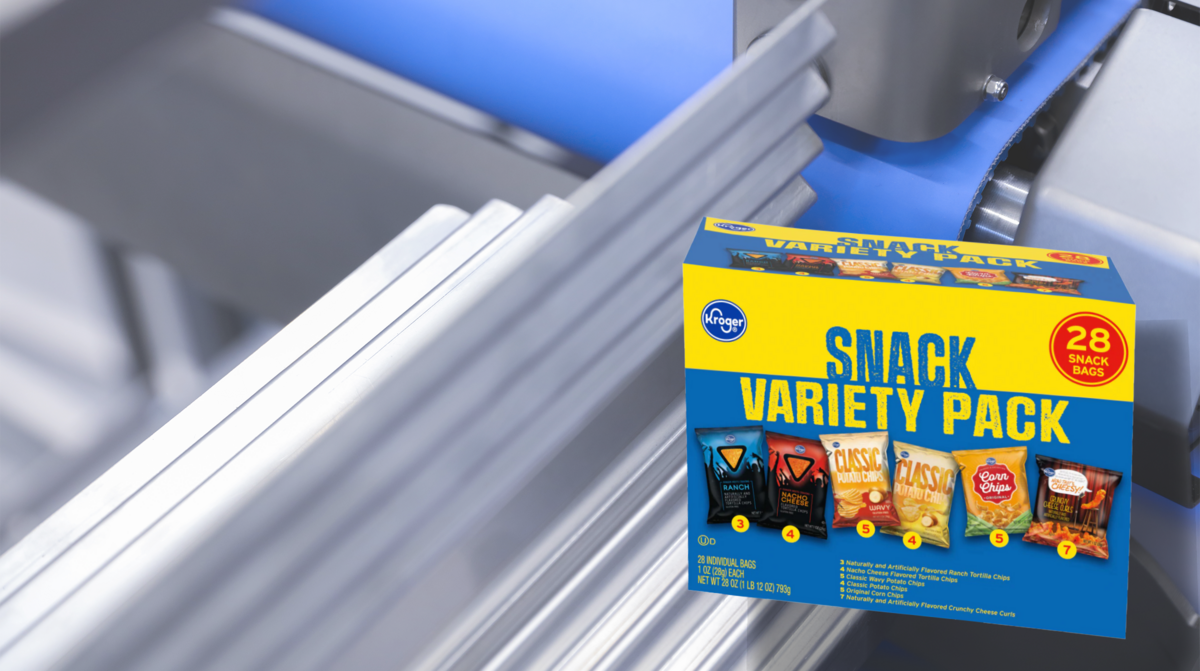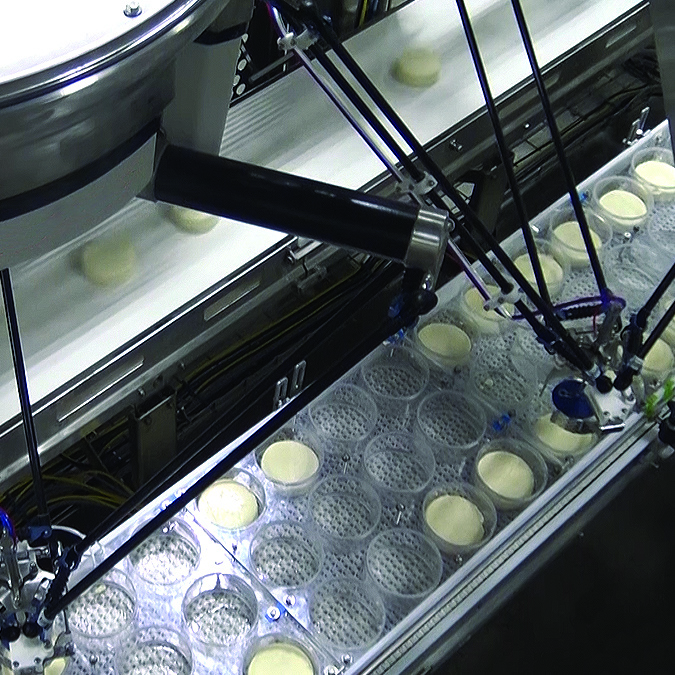Secondary Packaging Solutions to Keep Beef Jerky Lines Moving

As consumer demand for protein continues to rise, the beef jerky industry is seeing significant growth and availability. Industry sales are projected to grow to $6.5 billion by 2027. This convenient, protein-rich, on-the-go snack now comes in a wide variety of flavors and styles to satisfy even the most discerning palate anywhere. Beef jerky and other packaged meats can be found in gas stations and convenience stores, grocery aisles, club store displays, and online stores.
With more options than ever, the need for efficient secondary packaging solutions has never been greater. At Blueprint Automation (BPA), we specialize in traditional and advanced systems that help producers and co-packers keep pace and support various packaging formats. We’ll explore common types of secondary packaging used in beef jerky operations, challenges that impact downstream processes, and examples of automation that can help boost speed and flexibility.
Secondary Packaging for Beef Jerky In a Store Near You
Secondary packaging options for beef jerky manufacturers are designed to serve specific roles in both distribution and retail presentation. For example, the packaging used for products in club box stores differs significantly from what you’ll find at convenience store checkouts. New product formats that appeal to consumers also add complexity to production lines, which could spark a conversation about automation.
Here are a few common secondary packaging types used in the beef jerky industry and where they’re typically found:
Retail-Ready Cases
Designed for enhanced shelf appeal, retail-ready cases, like our Easy-D, present jerky bags in a neat, accessible format. They’re often preferred in grocery stores to reduce labor during stocking and get products on the shelves faster. Our Wraparound 100 case packer is perfectly suited for this retail-ready solution.
Cartons and Bags for Vacuum-Sealed Sticks
Cartons and bags can be used to hold individual jerky sticks that are vacuum-sealed for freshness. The sticks are picked up by the end-of-arm-tooling (EOAT) in a robotic cell and transferred to the bag or carton and packed into a case for distribution. Our Spider V is a top choice for this highly sophisticated application.
Variety Packs for Multiple Flavors
Consumers love multi-flavor packs because they combine several types of jerky into one case for value and variety. As they are often found in club stores, they require thoughtful integration to keep products organized and presentation-ready. We discussed variety pack line strategies previously, including gravity options, robotics, and traditional gantry-style case packing.
Stand-Up Ready Pouches (SURPs) and Large-Size Bags
These flexible pouches and bags are often packed directly into corrugated cases with a traditional case packer. They’re favored for their resealability and visual appeal on shelves for traditional and online retail.
Why Packaging Beef Jerky Isn't Always Easy
As production demands and packaging complexity increase, companies often have to deal with labor challenges, budgeting problems, and more. Many producers and co-packers in this industry still rely on manual packing, which is inefficient and error-prone. Large lines of packers can drain space and increase the risk of injury. Turnover is typically high, impacting speed and quality.
At the same time, upstream processes are often updated first, creating bottlenecks downstream when manual packers or legacy equipment cannot keep up. Yet, justifying the ROI for automated secondary packaging solutions may be difficult for smaller operations, especially if they have already invested in primary packaging upgrades.
Getting the buy-in for automation is only the start. While automation can help reduce labor costs and increase productivity, the hurdles listed below will be in the way, which is why we recommend working with an experienced automation partner like BPA.
- High-Speed Demands: Beef jerky production lines often run at very high speeds, especially for individual sticks. Integrating secondary packaging equipment that can keep up with these "fast stick rates" without bottlenecks is a significant challenge.
- Product Orientation: This mostly applies to individual sticks but can apply to bag orientation, too. Each individual jerky stick must be oriented correctly within the secondary package (e.g., labels facing out), especially for secondary packaging with window cut-outs.
- Diverse Product Formats: Beef jerky producers and co-packers will need to complete a wide range of product runs to meet demand for multiple consumer bases. Automated solutions must be flexible enough to accommodate these formats with quick changeovers.
- Shelf-Ready Complexities: The growing demand for shelf-ready packaging, while beneficial for retailers, adds another layer of complexity. Automated systems need to be able to create these specific configurations, often involving folds and perforations.
- Skilled Labor and Training: Even with automation, skilled operators and technicians are needed to manage and maintain the equipment. Aftermarket service contracts can provide some support, but training and retaining a specialized workforce remains a challenge.
A True Automation Partner to the Beef Jerky Industry
While many equipment manufacturers offer solutions, at BPA, we pride ourselves on being a true strategic partner for our customers. We don't just sell machines; we find the right fit to solve your unique challenges. We provide many advantages, including offering USA-manufactured equipment to simplify logistics and ensure part availability. Our sales consultants can work with you to find cost-efficient solutions that drive ROI fast and enhance profitability.
Our solutions include a mix of technologies to meet the needs of producers and co-packers and their comfort level with automation. We build everything from semi-automatic equipment to sophisticated robotics in-house to ensure quality and precision. Our equipment is easy to operate and maintain, can keep up with upstream processes, and is scalable to grow with your production demands.
If your secondary packaging operation is falling short, we offer a full range of gantry-style, robotic, and wraparound solutions backed by our proven process to help you meet your goals.
Wrapping Up
As the beef jerky market continues to grow with consumers’ love of protein, producers have a unique opportunity to meet their demand for variety and convenience. Secondary packaging automation can play a pivotal role in overcoming existing line challenges while improving efficiency and quality control. Contact us today if you’re interested in exploring options to transform your operation.



